Game Design Showdown
April 2009 Challenge - "Dictyostelids"
CHALLENGE IS NOW CLOSED. WINNER ANNOUNCED
Design a board game in which the players control their pieces in a whay that somehow resembles the individual and aggregate states of the Dictyostelid cellular slime molds.
Theme: Free. The game theme can be literally about cellular slime molds, or cellular nano-robots, or any other thing the designer finds suitable to the main challenge premise.
Main Design Requirement:
Players must control (owned or shared) pieces that can at some stages act individually and at some other times form clusters or groups that act as a unique entity with different capabilities than the individual pieces.
Formatting Request:
Please use the GDS formatting template as a reference to format your entries before submitting. No entry will be dismissed for lack of proper formatting, but entries based on the template will be greatly appreciated.
- Start Date: Thursday, 16-April-2009
- End Date: Thursday, 23-April-2009, Noon US Eastern time (approximately)
- Voting: Thusrday, 23-April-2009 through Thursday, 30-April-2009.
Comments or Questions: Comments and questions about this Challenge were handled on the Comments Thread.
GDS Details: For more details on how these Game Design Showdown Challenges work, visit the GDS Wiki Page.
Please note, you must PM or e-mail me, seo, your GDS entry for this month. If you want to use e-mail, please PM me for my e-mail address.




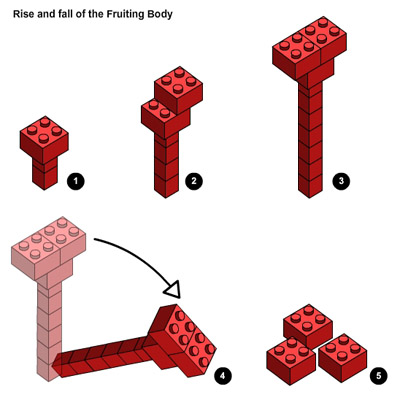
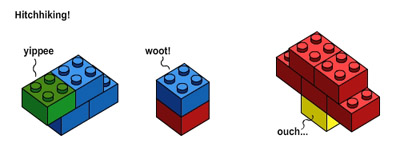
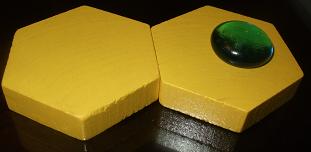
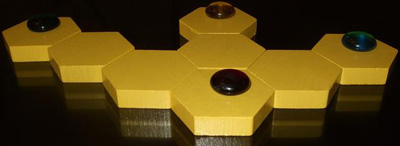
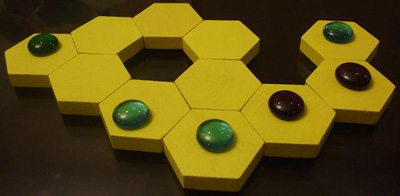

Entry #1
Ballo dei Pagliacci
(Dance of the Clowns)
The clown car rolls into the fairgrounds and begins disgorging a seemingly endless number of clowns. They cavort with the appreciative audience as they make their way to their assignments in the sideshow tents. Suddenly, a trouper emerges from the clown car, stares balefully at the rookie clowns and regally marches toward the Big Top. He is not happy with all the accolades the audience bestows on his lesser brethren and vows to steal the spotlight. Things are about to turn ugly…
Object:
There are two possible outcomes: a Trouper victory (Stealing the Spotlight) or a Cooperative victory (Sharing the Spotlight)
Number of Players:
3+
Equipment:
Game board, six dice, a poker deck with one Joker, a pile of poker chips and a dealer's shoe (optional) which represents the clown car
Setup:
Set the Joker aside and shuffle the remainder of the deck. Stick the Joker somewhere in the middle and place the deck into the shoe. Roll one die into each sideshow tent and two into the Big Top. Youngest player gets to be the Joker and operate the clown car.
Play:
Clown Car Follies
The clown car drives around to each player (figuratively) and disgorges one clown. If the Joker comes out during the first round, stick it deeper into the deck. The driver doesn’t get a clown. After every player has a clown, they take turns placing their clowns face-up into one of the four sideshow tents. As each clown enters a tent, create a stack so that only one clown's value is visible. Each player receives accolades from the audience (pile of poker chips). The die represents the number of cheers collected. Once all the clowns are inside the tents, the car makes another trip around the table. Repeat this phase until the Joker emerges.
Joker’s Wild!
As soon as the Joker emerges, set the clown car aside. Any clowns that just came out must follow the Joker into the Big Top. Only the Joker receives the accolades represented by the two dice. Separate the clowns in the Big Top so that other clowns may be stacked on top. Note: if the Joker was the first clown out of the car, there will be no additional clowns. In this case, deal three more clowns from the car and place them in the Big Top.
Starving For Attention
Starting with the player to the Joker’s left, the new sequence of events is as follows: The player examines the topmost clowns in the sideshow tents. If the player is able to, he can collect up to four clowns - one from each sideshow tent - and build onto one of the clowns already in the Big Top. Each clown must be one higher than the one below it, with aces being the highest. The Joker pays to the player one accolade for each clown brought into the Big Top. If the Joker is unable to pay the full amount, all clowns immediately declare a cooperative victory. If the player is unable or unwilling to build onto a stack, he must pay to the Joker a number of accolades equal to the higher of the two dice in the Big Top. After receiving the accolades, the Joker must reduce that die by one pip. If the die is at one, it remains there. If the player is unable to pay the full amount, he is out of the game. If he pays his last accolade, he has one more chance on his next turn to collect from the Joker. After the transaction, the turn passes to the next clown. If the turn reaches the Joker, he can either pass or force a showdown. If he passes, the clowns have another chance to gain a cooperative victory. If there is a showdown, the Joker must have more accolades than ALL other clowns combined. If he does, he wins. Otherwise, it's a cooperative victory for all clowns. Memory might be a useful skill, but it is not permissible to share information about the clowns stacked in the sideshow tents.
Strategy:
It may be tempting to cram all the clowns into the most lucrative sideshow tent, but this will make it nearly impossible to achieve a cooperative victory. It will only extend the inevitable Trouper victory as players find themselves unable to build stacks in the Big Top. In the spirit of cooperation, clowns should make sure that the next player will have a favorable play. Unless, of course, it’s the Joker! If the Big Top dice are large numbers, the clowns with more accolades may want to pay the Joker, reducing future payments for all clowns. The Joker’s only defense to this strategy is to force a showdown.